We had a lovely breakfast and got organised to leave at 7am. I’d done some hand washing in the basin but found there is a little washing stand outside. I was able to peg underwear on the line and at lunch used the washing powder to wash a couple of tee shirts and my hat, which had turned brown with the dust. There is a bucket of water on the wash stand for that purpose. 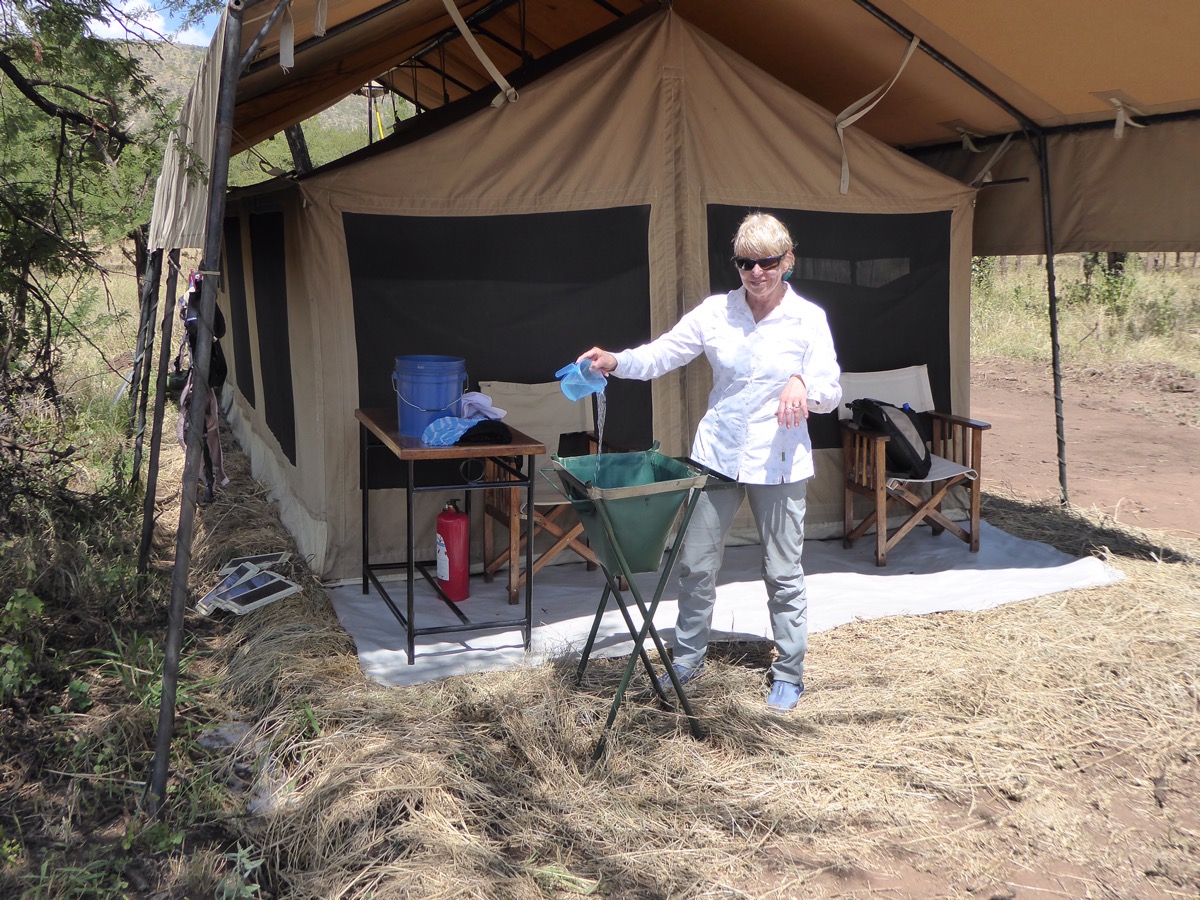
The camp has these blue flags hanging near tents and populated areas. We couldn’t work out what they were for but evidently they are an insect repellent. Tsetse flies are attracted to dark blue and they spray the flags with insecticide. We weren’t too bothered with Tsetse flies either in the vehicle or outside but the other group had a swarm of them. Evidently they bite and it stings a bit like a bee.
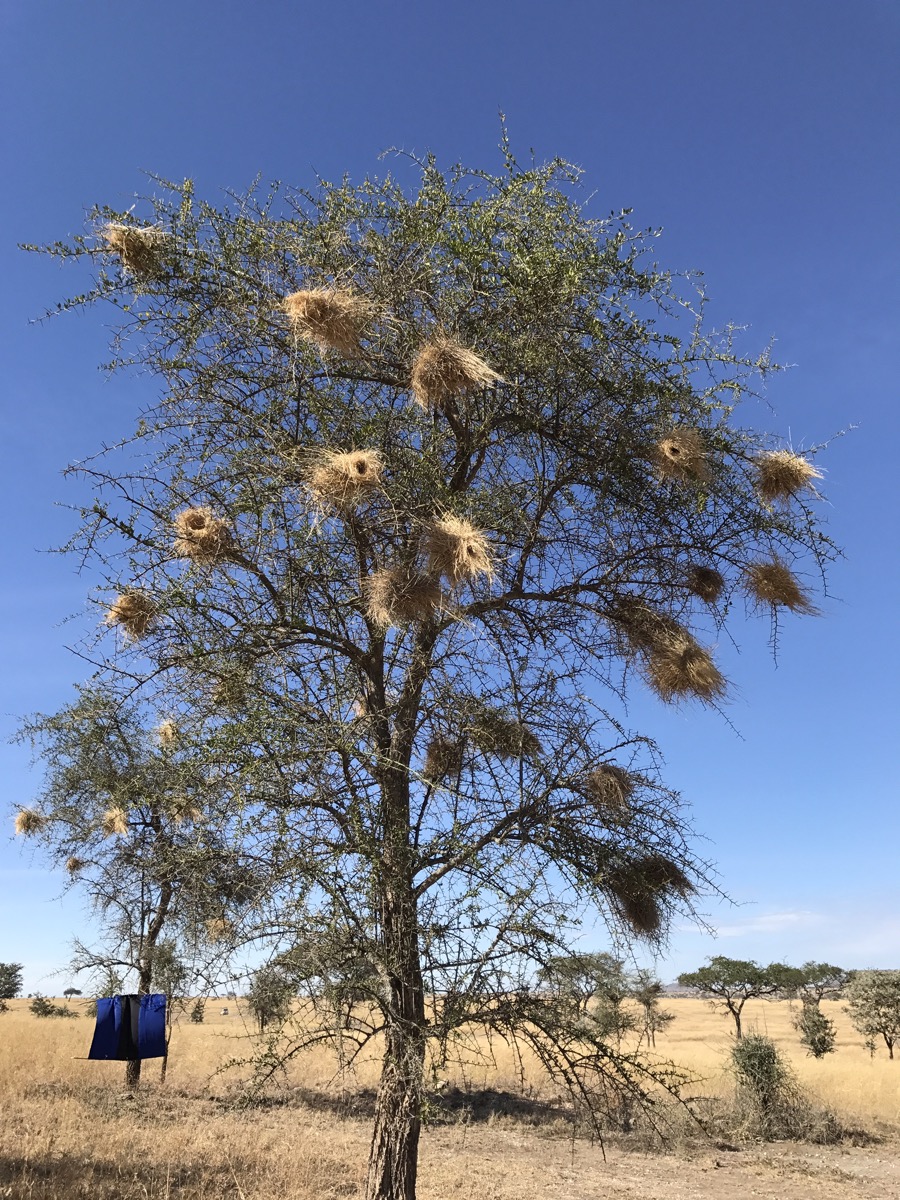
The birds nests are of the Weaver Bird, which makes the opening facing down so that predators can’t get their chicks. The nests are built at the end of branches so that pythons can’t get them and generally on the northern side so that the sunshine can incubate the chicks when the mother is off looking for food.
The Serengeti is quite different from the Masai Mara. It is much flatter and comprises 21/2 thousand square kilometres of sparse bush and grassland. With the early morning sun it was just lovely.
We saw heaps of Thompson’s Gazelle (second fastest land mammal after the cheetah), Grant’s Gazelle, Wildebeest, giraffes, zebras, impala, red buck, warthogs, elephants, vultures, a single cheetah sitting under a tree, a leopard sitting in a tree beside a gazelle carcass (that it had dragged up there to protect it from the hyenas), a lone pregnant hyena lying beside the road in the shade, ostriches and numerous lions including a young male with 2 females.


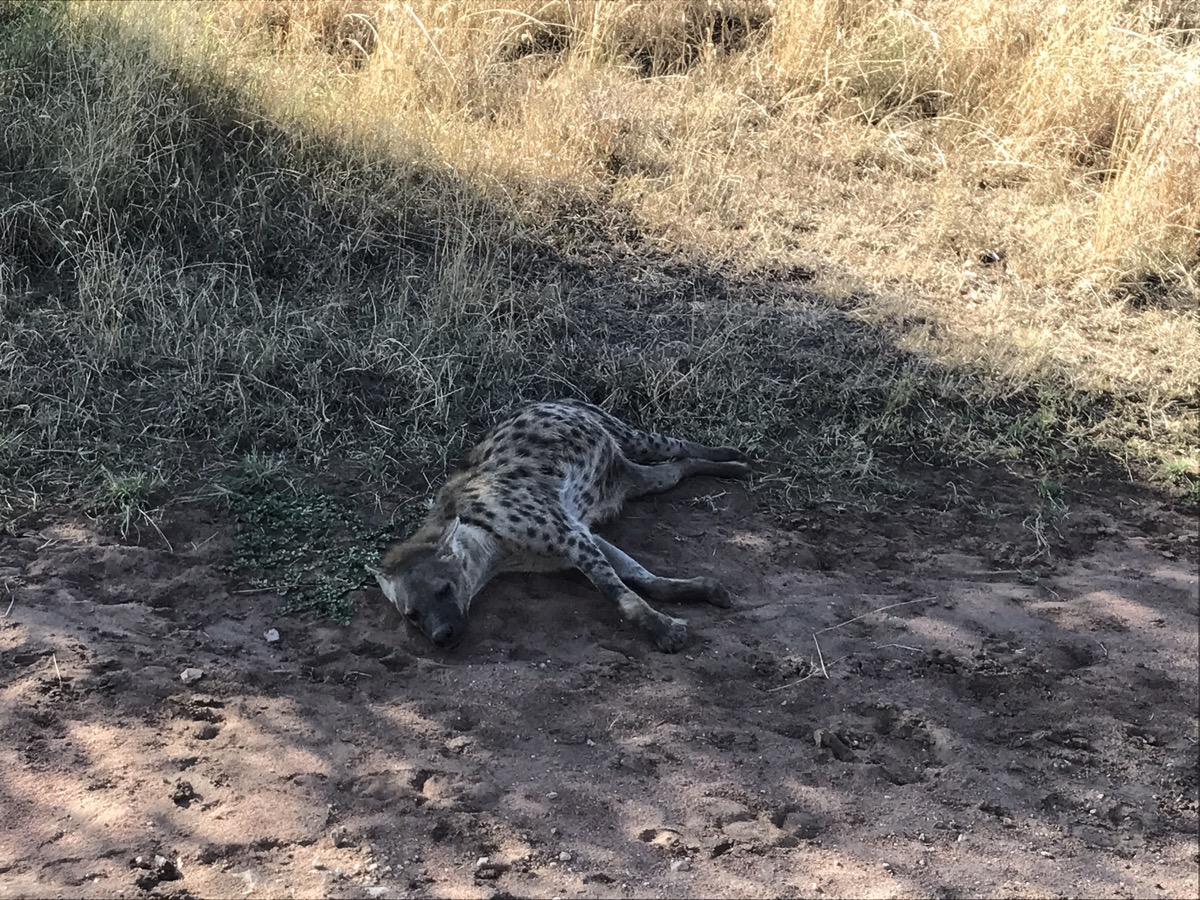 We also saw these huge, ugly birds called Marabou Storks which are scavengers.
We also saw these huge, ugly birds called Marabou Storks which are scavengers. 
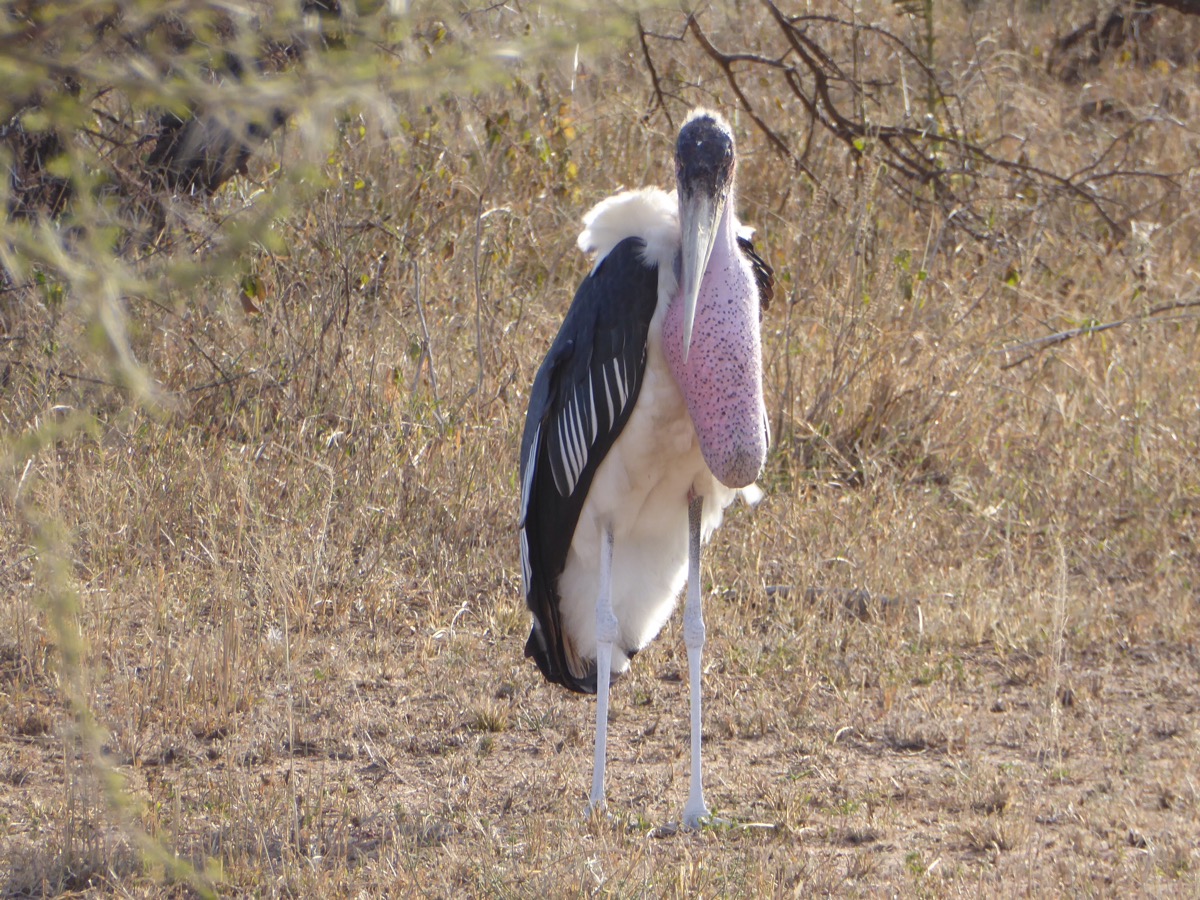
There was a lookout place where we used the toilets, which were amazingly clean, with flush – although the water for the flush was manually added to an exterior tank. There was a young man keeping it all clean and in working order and many of us tipped him.

There were also these tiny mongooses running everywhere. They are like meerkats. We passed by a family of Dikdiks which are the smallest in the antelope family. The baby kept going under the wagon and the parents seemed quite unconcerned. We got some good photos close up.

Usually they are pretty skittish.
We also came across a lioness under a tree with a giraffe family on either side. The male giraffe was clearly concerned and stood staring at her. A giraffe can kick hard enough to break bones on a lion so they only go for baby ones where they can jump up higher than the legs.
On the way back for lunch we saw this poor Thompson’s Gazelle stuck in the mud. It will be a goner soon. The group in the other wagon wanted to hook up a rope and haul it out but that is just interfering with the course of nature. I think some of them were not happy about that. Someone evidently saw (on tv I assume) rangers rescuing a baby elephant from the mud and wanted to do the same. Apart from the fact access to it was off road and on the other side of a river from us, where do you draw the line? In any event elephants are probably endangered but I don’t think Thompson’s Gazelle are. 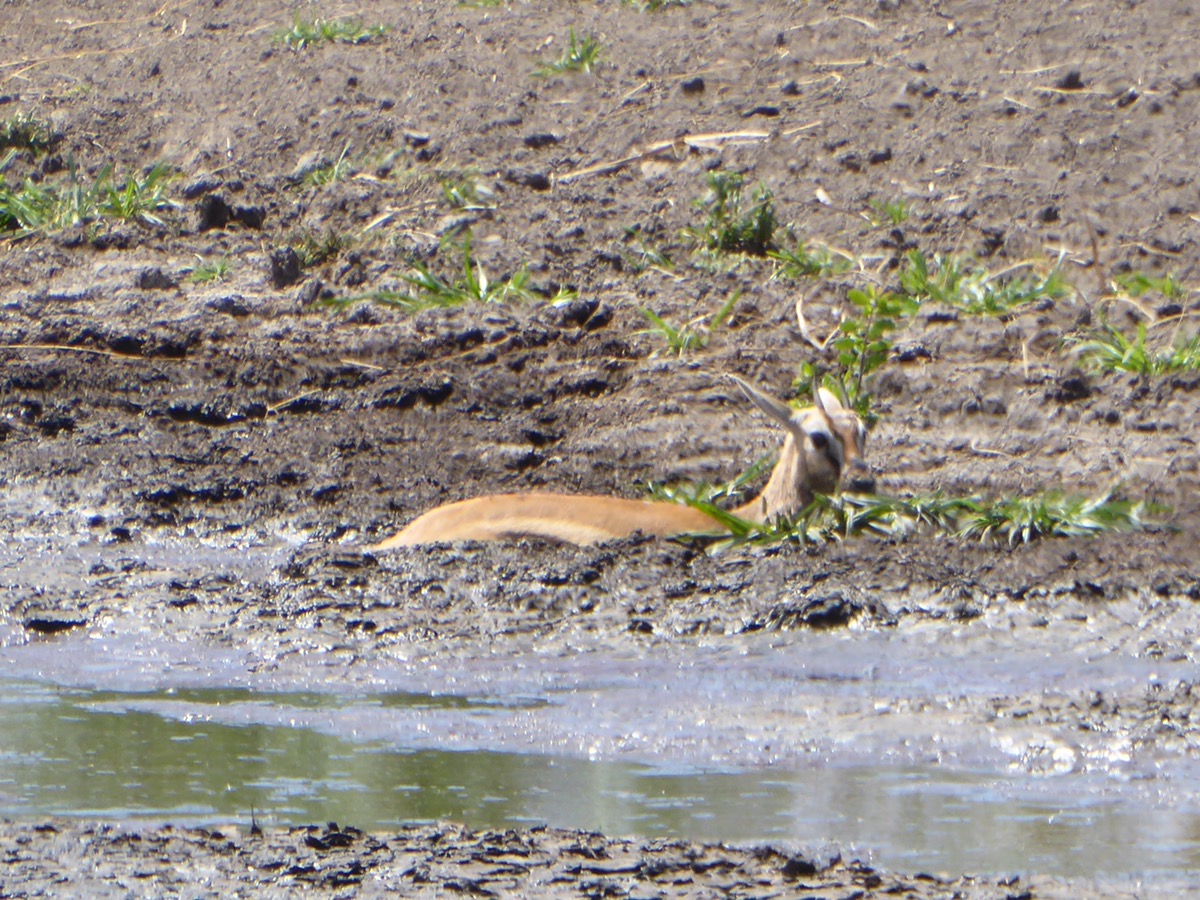

We arrived back just before midday, had lunch and then a much appreciated break. The washing bucket had been refilled so I did some more laundry. My hat had mostly dried by 3.30 when we went out again.
Our afternoon was just as exciting. Soon after leaving camp we came across a family group of elephants. One wagon went onto this bridge and ours went down the side by a ford. We had elephants on both sides and they were really close. The one on the bridge put her trunk down on their bonnet.
 I’ve got video of some of it but it’s a bit long to upload.
I’ve got video of some of it but it’s a bit long to upload. 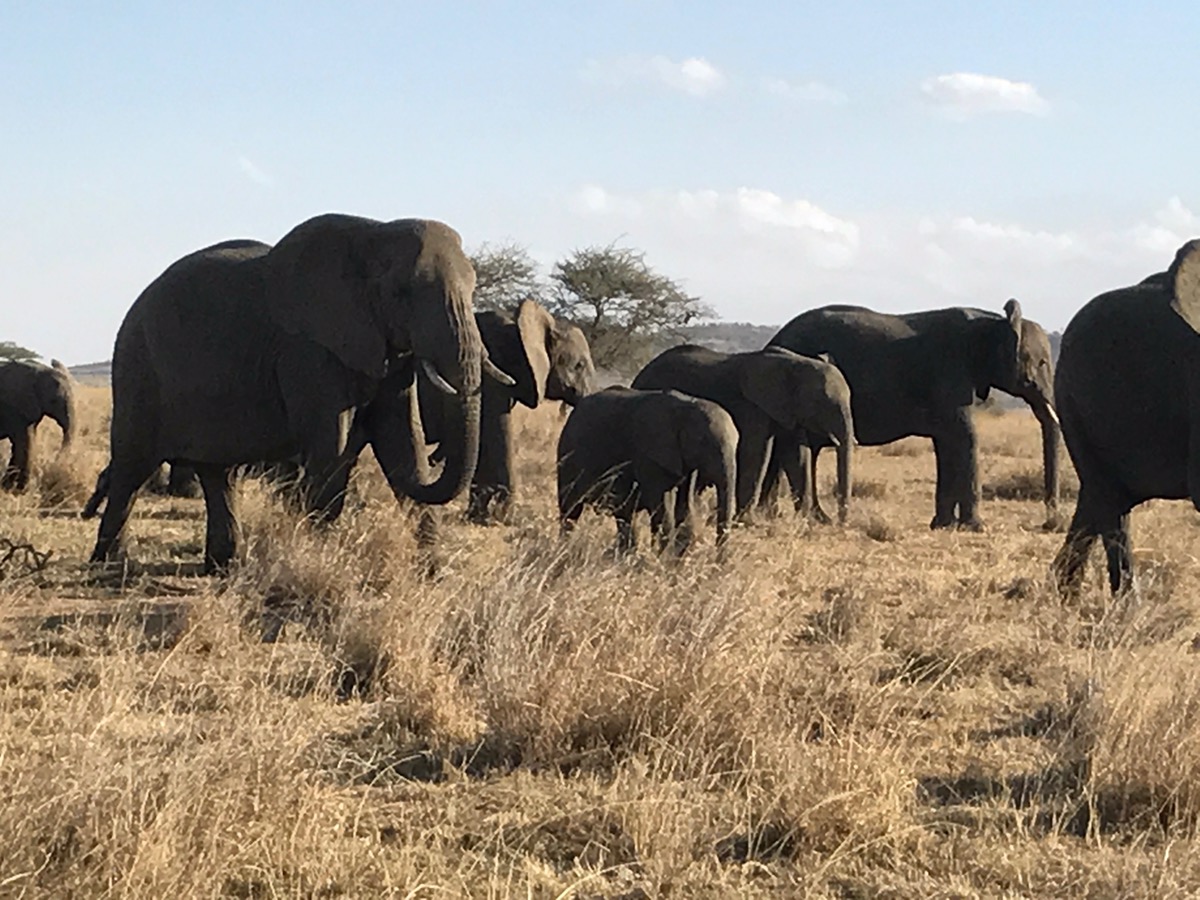 We had elephants grazing all around us. Then we went a bit further on and came upon this large male elephant at the side of the track. We stopped beside him but he was clearly uncomfortable with us so close and started to behave aggressively. He flapped his ears, peed, stomped his foot, trumpeted and then did a few steps in a mock charge. At that point Rama had the motor going and we were out of there.
We had elephants grazing all around us. Then we went a bit further on and came upon this large male elephant at the side of the track. We stopped beside him but he was clearly uncomfortable with us so close and started to behave aggressively. He flapped his ears, peed, stomped his foot, trumpeted and then did a few steps in a mock charge. At that point Rama had the motor going and we were out of there.
Then we went a bit further and saw a lion asleep in a tree. You had to use the binoculars to see her but could see her tail hanging down clearly enough. 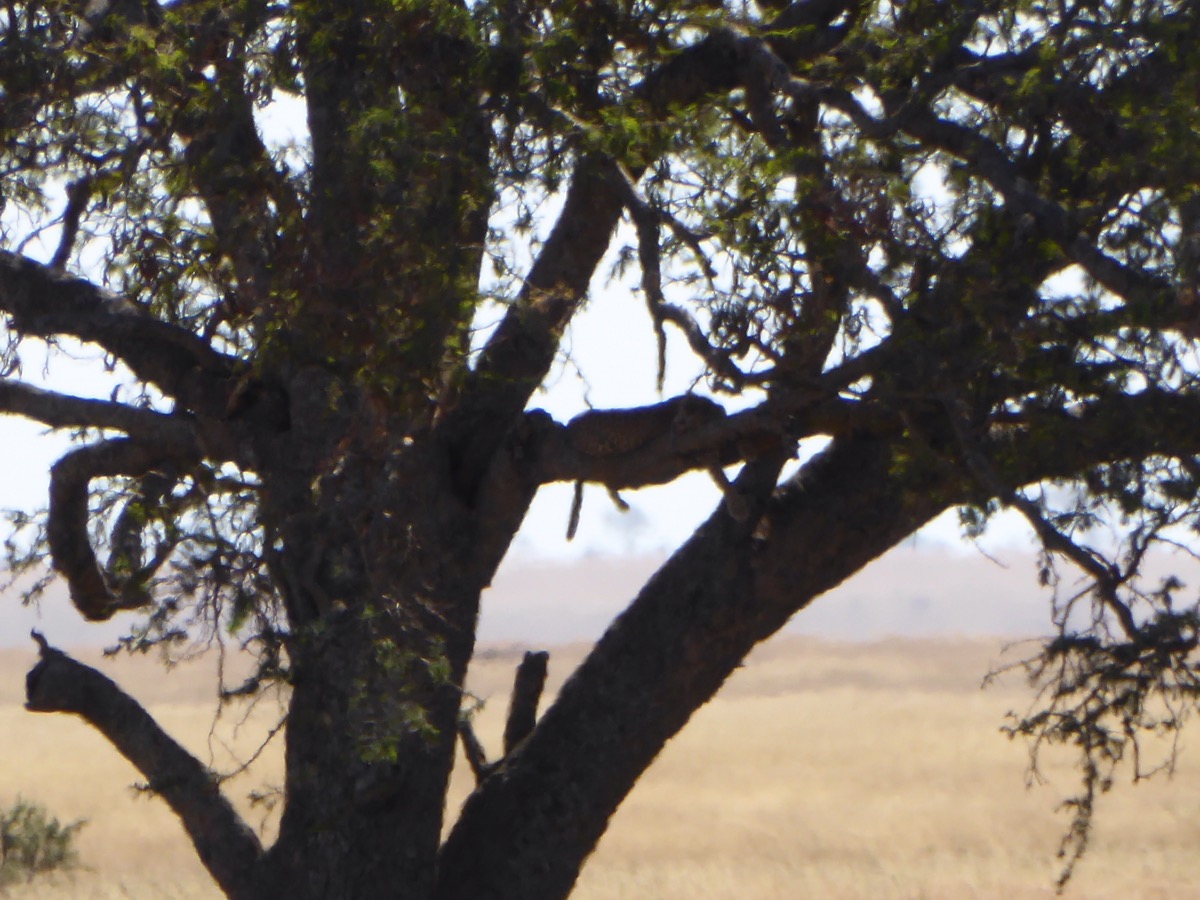 Evidently they sometimes climb up to get a better view but it’s quite unusual. Then we saw a sleeping lioness with 2 cubs under a tree and another leopard up a tree.
Evidently they sometimes climb up to get a better view but it’s quite unusual. Then we saw a sleeping lioness with 2 cubs under a tree and another leopard up a tree. 
On return to camp we had showers, did some laundry and had a drink beside the campfire.  There was a largish spider inside our tent beside the zip to one window so I asked one of the staff to get rid of it. He (Samson) said it was a “not good” spider and he grabbed a wad of loo paper and got it out. (Tanzanian loo paper is really cute. It has pictures of kittens on the outside).
There was a largish spider inside our tent beside the zip to one window so I asked one of the staff to get rid of it. He (Samson) said it was a “not good” spider and he grabbed a wad of loo paper and got it out. (Tanzanian loo paper is really cute. It has pictures of kittens on the outside).
After another wonderful dinner, Samson escorted us back to the tent and shone his torch onto the grass just beyond the clearing. There was a hyena lying in the grass waiting to search out some food or scraps. Quite scary really.
